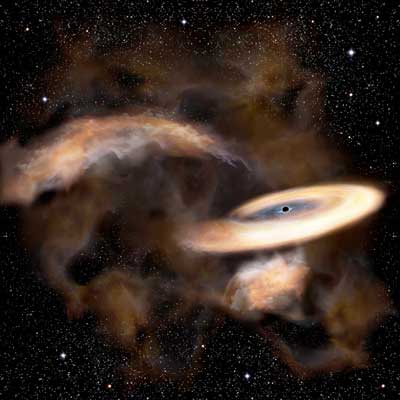 Astronomers have detected a stealthy black hole from its effects on an interstellar gas cloud. This intermediate mass black hole is one of over 100 million quiet black holes expected to be lurking in our Galaxy.
Astronomers have detected a stealthy black hole from its effects on an interstellar gas cloud. This intermediate mass black hole is one of over 100 million quiet black holes expected to be lurking in our Galaxy.
Feb 28th, 2019
Read more
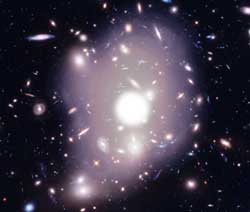 Dark matter may scatter against each other only when they hit the right energy. This idea helps explain why galaxies from the smallest to the biggest have the shapes they do.
Dark matter may scatter against each other only when they hit the right energy. This idea helps explain why galaxies from the smallest to the biggest have the shapes they do.
Feb 27th, 2019
Read more
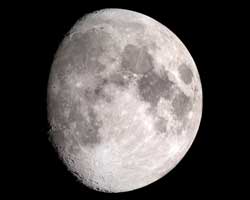 When a stream of charged particles known as the solar wind careens onto the Moon's surface at 450 kilometers per second, they enrich the Moon's surface in ingredients that could make water.
When a stream of charged particles known as the solar wind careens onto the Moon's surface at 450 kilometers per second, they enrich the Moon's surface in ingredients that could make water.
Feb 20th, 2019
Read more
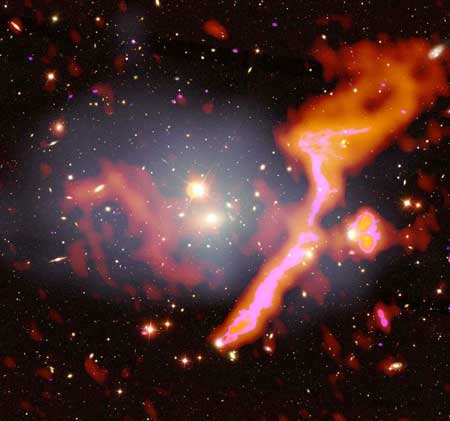 A new survey reveals hundreds of thousands of previously undetected galaxies, shedding new light on many research areas including the physics of black holes and how clusters of galaxies evolve.
A new survey reveals hundreds of thousands of previously undetected galaxies, shedding new light on many research areas including the physics of black holes and how clusters of galaxies evolve.
Feb 19th, 2019
Read more
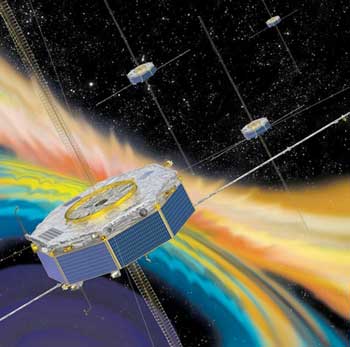 A new study describes the first direct measurement of how energy is transferred from the chaotic electromagnetic fields in space to the particles that make up the solar wind, leading to the heating of interplanetary space.
A new study describes the first direct measurement of how energy is transferred from the chaotic electromagnetic fields in space to the particles that make up the solar wind, leading to the heating of interplanetary space.
Feb 14th, 2019
Read more
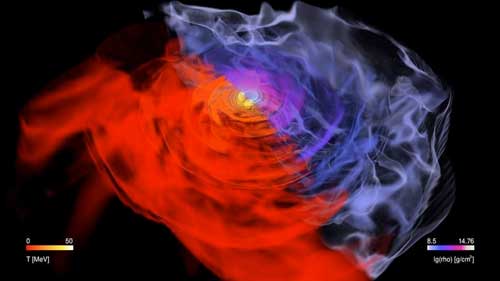 Two international research groups report on their calculations of what the signature of a phase transition in a gravitational wave, where neutrons dissolve into their constituents, would look like.
Two international research groups report on their calculations of what the signature of a phase transition in a gravitational wave, where neutrons dissolve into their constituents, would look like.
Feb 13th, 2019
Read more
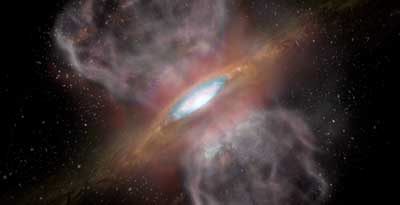 A team of astronomers and chemists has detected the chemical fingerprints of sodium chloride (NaCl) and other similar salty compounds emanating from the dusty disk surrounding Orion Source I, a massive, young star in a dusty cloud behind the Orion Nebula.
A team of astronomers and chemists has detected the chemical fingerprints of sodium chloride (NaCl) and other similar salty compounds emanating from the dusty disk surrounding Orion Source I, a massive, young star in a dusty cloud behind the Orion Nebula.
Feb 7th, 2019
Read more
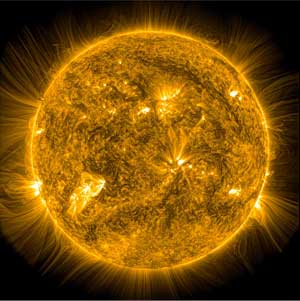 New research shows that the Sun's magnetic waves behave differently than currently believed.
New research shows that the Sun's magnetic waves behave differently than currently believed.
Feb 7th, 2019
Read more
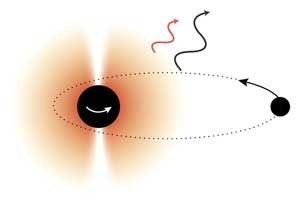 The presence of energy level transitions in the hypothetical boson cloud would induce a characteristic 'fingerprint' in the gravitational wave signals produced by merging black holes.
The presence of energy level transitions in the hypothetical boson cloud would induce a characteristic 'fingerprint' in the gravitational wave signals produced by merging black holes.
Feb 7th, 2019
Read more
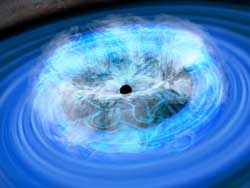 Researchers have measured the strength of magnetic fields near two supermassive black holes at the centers of an important type of active galaxies. Surprisingly, the strengths of the magnetic fields do not appear sufficient to power the coronae.
Researchers have measured the strength of magnetic fields near two supermassive black holes at the centers of an important type of active galaxies. Surprisingly, the strengths of the magnetic fields do not appear sufficient to power the coronae.
Feb 1st, 2019
Read more
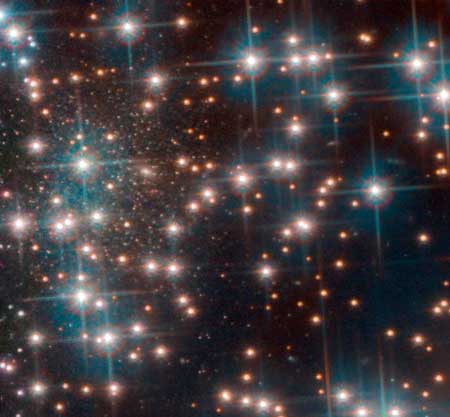 Astronomers using the NASA/ESA Hubble Space Telescope to study some of the oldest and faintest stars in the globular cluster NGC 6752 have discovered a dwarf galaxy in our cosmic backyard, only 30 million light-years away.
Astronomers using the NASA/ESA Hubble Space Telescope to study some of the oldest and faintest stars in the globular cluster NGC 6752 have discovered a dwarf galaxy in our cosmic backyard, only 30 million light-years away.
Jan 31st, 2019
Read more
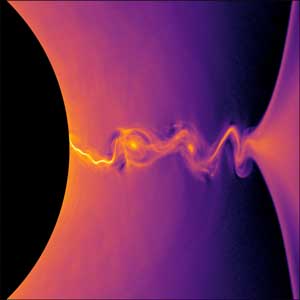 New simulations reveal how interactions between magnetic fields and particles sap a black hole's energy.
New simulations reveal how interactions between magnetic fields and particles sap a black hole's energy.
Jan 30th, 2019
Read more
 Investigating cement solidification in a microgravity environment.
Investigating cement solidification in a microgravity environment.
Jan 28th, 2019
Read more
 In a discovery that could provide new insights into the origin of mass in the universe following the Big Bang, scientists have used experiments with kaons and helium-3 to experimentally demonstrate, for the first time, the existence of an exotic nucleus containing two protons and a bound kaon.
In a discovery that could provide new insights into the origin of mass in the universe following the Big Bang, scientists have used experiments with kaons and helium-3 to experimentally demonstrate, for the first time, the existence of an exotic nucleus containing two protons and a bound kaon.
Jan 28th, 2019
Read more
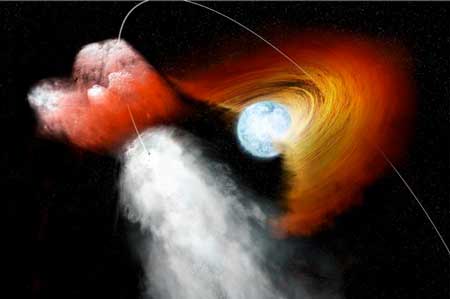 Data recorded by NASA's Chandra X-ray Observatory of a neutron star as it passed through a dense patch of stellar wind emanating from its massive companion star provide valuable insight about the structure and composition of stellar winds.
Data recorded by NASA's Chandra X-ray Observatory of a neutron star as it passed through a dense patch of stellar wind emanating from its massive companion star provide valuable insight about the structure and composition of stellar winds.
Jan 24th, 2019
Read more
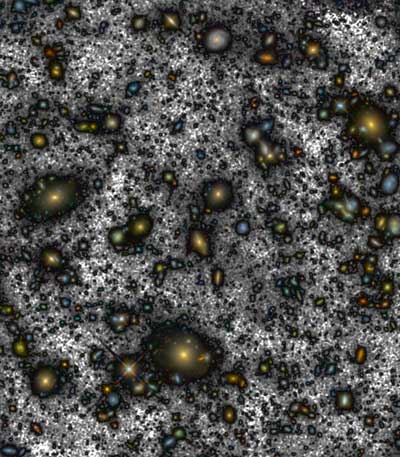 It has taken researchers almost three years to produce the deepest image of the Universe ever taken from space, by recovering a large quantity of 'lost' light around the largest galaxies in the HUDF.
It has taken researchers almost three years to produce the deepest image of the Universe ever taken from space, by recovering a large quantity of 'lost' light around the largest galaxies in the HUDF.
Jan 24th, 2019
Read more
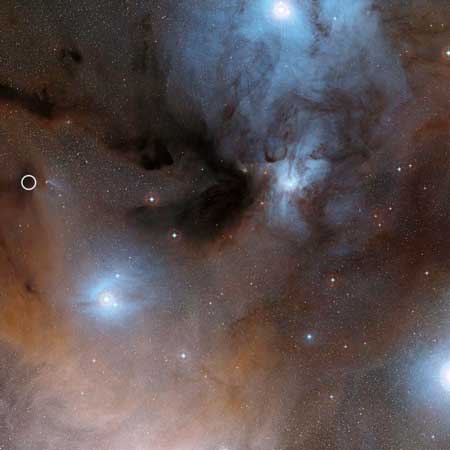 An organic molecule detected in the material from which a star forms could shed light on how life emerged on Earth.
An organic molecule detected in the material from which a star forms could shed light on how life emerged on Earth.
Jan 23rd, 2019
Read more
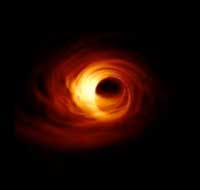 Including the powerful ALMA into an array of telescopes for the first time, astronomers have found that the emission from the supermassive black hole Sagittarius A* at the center of our Galaxy comes from a smaller region than previously thought.
Including the powerful ALMA into an array of telescopes for the first time, astronomers have found that the emission from the supermassive black hole Sagittarius A* at the center of our Galaxy comes from a smaller region than previously thought.
Jan 21st, 2019
Read more
 Astronomers have detected a stealthy black hole from its effects on an interstellar gas cloud. This intermediate mass black hole is one of over 100 million quiet black holes expected to be lurking in our Galaxy.
Astronomers have detected a stealthy black hole from its effects on an interstellar gas cloud. This intermediate mass black hole is one of over 100 million quiet black holes expected to be lurking in our Galaxy.
 Subscribe to our Space Exploration News feed
Subscribe to our Space Exploration News feed















